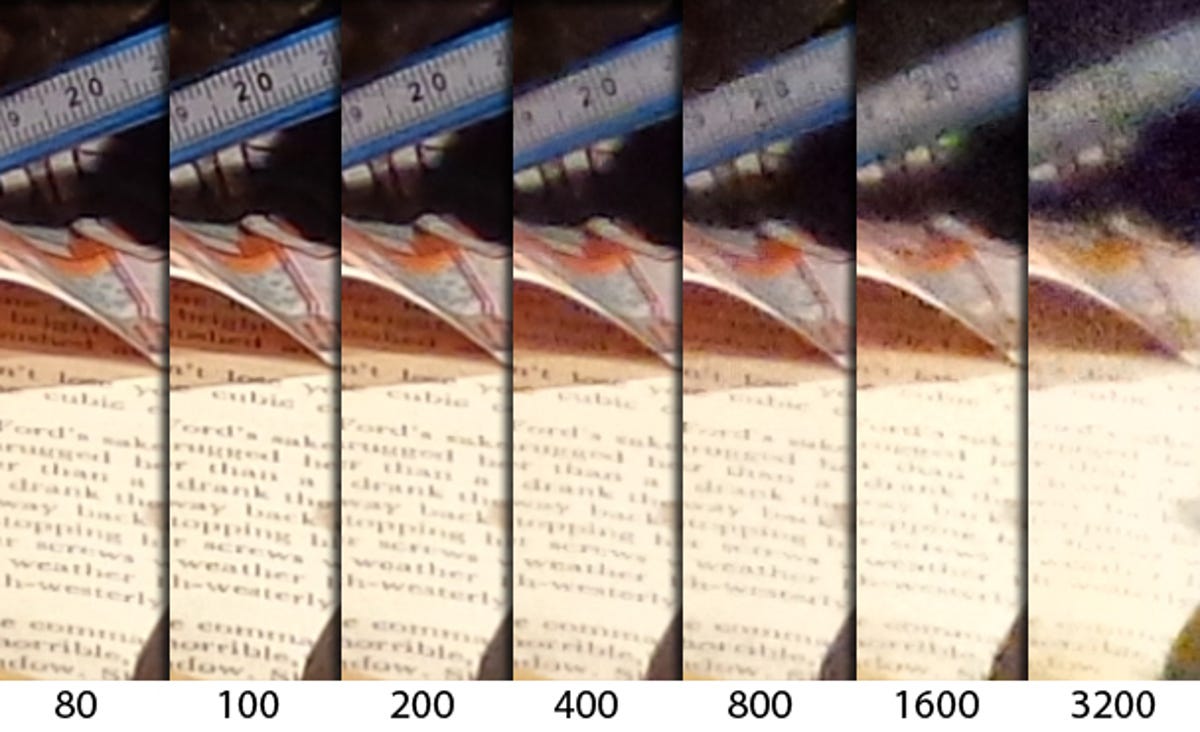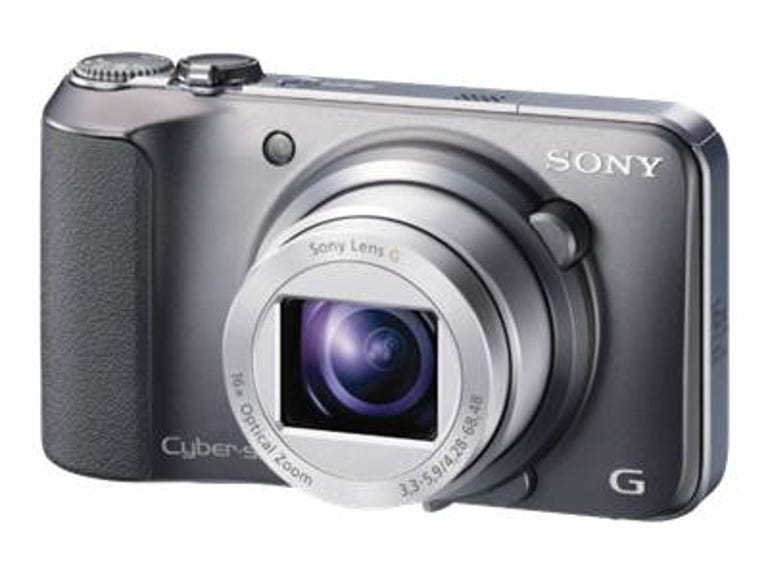 Why You Can Trust CNET
Why You Can Trust CNET Sony Cyber-shot DSC-H90 review: Good for what it is -- no more, no less
The H90 might be very good for what it is, but its slightly more expensive linemate is a better deal.
It's not uncommon for camera manufacturers to sell two (or more) models of essentially the same point-and-shoot camera -- one with the latest features and technologies and a stripped-down version. The Sony Cyber-shot DSC-H90 is the stripped-down version of the Sony Cyber-shot DSC-HX10V.
The Good
The Bad
The Bottom Line
A casual look at the two side by side and you might think they're the same camera mainly because they have the same 16x, f3.3-5.9, 24-384mm Sony G lens. Look a little closer, though, and you'll see that the H90 has fewer shooting modes on its dial; a mono mic instead of stereo mics; no one-touch record button for movies; no HDMI output; and slightly different controls. You may also notice that the HX10V has a Sony Exmor R 18-megapixel sensor, while the H90 simply says 16 megapixels on it.
It's that sensor (as well as the image processor that backs it up) that makes the HX10V a better camera than the H90. At the time of this review, the models were separated by about $70, which is not a small amount, but compared with the differences in the cameras it's worth saving and buying the higher-end model.
The exception to that, however, is if you just want an above-average compact camera with a versatile lens for taking photos and movie clips in daylight of slow-moving or stationary subjects like portraits, landscapes, dead things, rocks, etc. For that, the H90 is plenty of camera, especially if you can get it for less than $200.
Photo quality
Photo quality from the H90 is very good for its class, but like most compact cameras -- particularly those with CCD sensors -- it still stumbles at higher ISOs. Photos at ISO 80 and 100 are relatively sharp with a decent amount of fine detail and low noise. At ISO 200, subjects soften some, losing sharpness and fine detail.
At ISO 400, images get noticeably softer and there's an increase in noise in darker areas of images. If you're printing at and below 5x7 inches or sharing online and not doing much enlarging and heavy cropping, the results are fine. The camera seems to favor ISO 400 when left in auto, too, when you've got the lens fully zoomed in even in daylight. Photos at ISO 800 and 1600 look painterly from noise reduction, so subjects will appear soft and smeary; it's even worse at ISO 3200, making pictures unusable.

What all this means is that if most of your shooting is done outside in good lighting, the H90 will turn out very good results for the most part. The 16-megapixel resolution isn't really usable for enlarging to full size and heavy cropping. For small prints and Web sharing, though, most people should be pleased with the results.
The same can be said about its video quality. Movie clips are on par your average smartphone; good enough for Web use, but you probably won't like looking at them on a large HDTV. Panning the camera will cause judder and you may also see trailing behind fast-moving subjects. Both are typical of the video from many compact cameras, though. The zoom lens does function while recording, but you will hear it in your recordings, especially in quieter scenes.
Shooting performance
If you're considering the H90 for regularly photographing fast-moving kids, pets, and sports, I wouldn't recommend it; it's just too slow. Though its lens pops out reasonably fast, it takes about 3.1 seconds from off to first shot. Shot-to-shot times averaged 2 seconds. Using the flash extends that wait to 5.9 seconds on average. Its shutter lag -- how quickly a camera captures an image after the shutter-release button is pressed without prefocusing -- is OK for its class, but still long; 0.4 second in bright lighting, and in low-light conditions the lag goes up to 0.7 second. However, having just a little less light drove the lag up to 1.9 seconds. Using the zoom lens in dim conditions will slow things down considerably, too.
Its continuous shooting speed is somewhat slow, too, shooting at 1.1 frames per second. That's with the focus and exposure set with the first shot, so if your subject is moving relatively fast, it might not be in focus for all of your photos. Now, that's not to say you won't get the occasional action shot, but the chances of you getting the shot you wanted aren't great.
Design and features
The overall design of the H90 is nice and simple. Most people familiar with digital cameras should be able to use it out of the box, but there is a full user manual embedded in the camera for quick reference whenever you want. The body is a bit chunky, but will still fit in a jacket pocket.
The buttons are tiny but fairly easy to press, though their markings are difficult to see in anything but direct light. The screen is large and bright, making it easy to see in bright conditions (you might still struggle in direct sun, though). There's a textured grip on the front and an indentation on back for your thumb.
| Key specs | Sony Cyber-shot DSC-H90 |
|---|---|
| Price (MSRP) | $249.99 |
| Dimensions (WHD) | 4.1x2.4x1.3 inches |
| Weight (with battery and media) | 7.8 ounces |
| Megapixels, image sensor size, type | 16 megapixels, 1/2.3-inch CCD |
| LCD size, resolution/viewfinder | 3-inch LCD, 460K dots/None |
| Lens (zoom, aperture, focal length) | 16x, f3.3-5.9, 24-384mm (35mm equivalent) |
| File format (still/video) | JPEG/MPEG-4 AVC/H.264 (.MP4) |
| Highest resolution size (still/video) | 4,608x3,456 pixels/1,280x720 pixels at 30fps |
| Image stabilization type | Optical and digital |
| Battery type, CIPA rated life | Li ion rechargeable, 290 shots |
| Battery charged in camera | No; external charger included |
| Storage media | SD/SDHC/SDXC; Memory Stick Pro Duo |
| Bundled software | PlayMemories Home (Windows); Music Transfer (Windows, Mac) |
For connecting to a computer or TV, the camera has a Micro-USB port on the bottom of the camera. A USB cable is included, but connecting directly to a display requires the purchase of a USB/AV cable.
The memory card slot and battery compartment are protected by a lockable door, which you'll have to open regularly to remove the battery for charging. Battery life is pretty good for its size, rated at 290 shots. Using the zoom a lot, shooting video, or really doing anything more than automatic snapshots will shorten the shot count.
The H90's card slot can take an SD card or Memory Stick. Though internal memory is limited, it does host a small piece of software for quickly uploading photos and movies to sharing sites when the camera is connected to a Windows computer.
| General shooting options | Sony Cyber-shot DSC-H90 |
|---|---|
| ISO sensitivity (full resolution) | Auto, 80, 100, 200, 400, 800, 1600, 3200 |
| White balance | Auto, Daylight, Cloudy, White Fluorescent Lighting, Natural White Fluorescent, Day White Fluorescent, Incandescent, Flash, Manual |
| Recording modes | Easy, Intelligent Auto, Program, Sweep Panorama, Picture Effect, Scene, Movie |
| Focus modes | Multi AF, Center AF, Spot AF, Face Detection (Adult, Child) |
| Macro | 1.9 inches (Wide); 3.9 feet (Tele) |
| Metering modes | Multi, Center, Spot |
| Burst mode shot limit (full resolution) | 100 shots |
The H90's shooting modes offer more control over results than an average point-and-shoot, but the bulk of its options are automatic. The Intelligent Auto scene recognition mode turns out reliable results without any adjustments, but there are still a couple of options available, like exposure and setting face detection priorities. An Easy mode takes away all options except for image size (large or small) and enlarges onscreen text.
There are 12 scene-shooting options, including Beach, Snow, Twilight, Pet, and High Sensitivity for low-light shooting without a flash. The camera also has a version of Sony's Sweep Panorama feature that allows you to quickly and easily take panoramic shots horizontally or vertically. Though fun, the results are just on par with a screen capture from a video clip. Consider them for Web use only, viewing on a TV from a proper distance, or very small prints.
For more control there's a Program Auto mode so you can adjust ISO, white balance, autofocus points, light metering, and exposure values, as well as control the amount of Sony's Dynamic Range Optimization used for rescuing shadow detail. Also available in Program are a few of Sony's Picture Effects for those who are addicted to playing with various photo apps or just want to experiment. Options include Toy Camera (with different hues to pick from), Pop Color, Partial Color (turns everything monochrome except for a selected color), and Soft High-key.
There is a full manual option for control over aperture and shutter speed. It's limited to two aperture settings each at the wide and telephoto ends (using a neutral density filter); f3.3 and f8 for wide and f5.9 and f14 for telephoto with a few more stops available through the zoom range. Shutter speeds are adjustable from 1/1,600 to 30 seconds. Again, it's more than you get on most point-and-shoots, so I'm not complaining; just don't buy this expecting a lot of control.
Also worth mentioning is that the H90 has exposure bracketing that will take three photos, one at the exposure you select and then two more at plus and minus 0.3EV, 0.7EV, or 1.0EV. It doesn't do this terribly fast, though, so you may want to use a tripod and only with still subjects.
Conclusion: Recommended with reservations
The Sony Cyber-shot DSC-H90 is fine for what it is. If you're doing a lot of shooting indoors and out, need fast performance, and will be regularly using it for movie clips, I'd save up and go with the HX10V or consider the Panasonic Lumix ZS20 or Canon PowerShot SX260 HS. But, those just looking for a long lens in a compact body for casual snapshots, it's sufficient -- especially if you can get it for less than $200.


